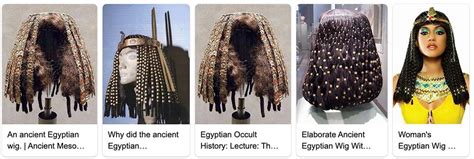The History of Wigs: A Timeline
- 3000 BC: Ancient Egyptians wore wigs made from human hair, wool, and plant fibers.
- 1600 AD: Renaissance Europe saw a surge in wig popularity, with elaborate styles adorned with ribbons and jewels.
- 1700 AD: Wigs became a symbol of wealth and status in France, reaching extravagant heights known as “poufs.”
- 1800 AD: Human hair wigs gained prominence, while synthetic wigs emerged as a more affordable option.
- 1900 AD: Bobbed wigs became fashionable, reflecting the changing social norms for women.
- 2000 AD: Modern wigs offer a wide range of styles, materials, and applications, including hair loss remedies, fashion statements, and cosplay.
The Wig Market: Size and Growth
- The global wig market is estimated to reach $13.4 billion by 2028, growing at a CAGR of 6.3% during the forecast period.
- North America and Europe are the largest markets for wigs, accounting for over 50% of global sales.
Types of Wigs: Materials and Construction
- Human hair wigs: Luxurious and durable, providing the most natural look and feel. However, they require more care and maintenance.
- Synthetic hair wigs: Affordable, versatile, and easy to style. They come in a wide range of colors, textures, and lengths.
- Heat-resistant fiber wigs: Can withstand high temperatures for styling, making them ideal for cosplay or costume purposes.
- Lace wigs: Offer a realistic scalp appearance, with delicate lace that blends seamlessly with the skin.
- Capless wigs: Ventilated for breathability, providing a comfortable and secure fit.
- Machine-made wigs: Constructed using a sewing machine, offering a more structured and defined look.
- Hand-tied wigs: Individually hand-tied on a lace base, creating a realistic hair growth pattern.
Wig Applications: Beyond Hair Loss
- Fashion: Wigs offer a quick and easy way to change hairstyles, experiment with trends, and add volume or length.
- Cosplay: Create realistic or fantastical character looks with wigs tailored to specific anime, movie, or video game characters.
- Medical: Wigs provide a discreet solution for hair loss caused by conditions like alopecia or chemotherapy.
- Wigology: A novel term for an emerging discipline that explores the psychological and therapeutic benefits of wigs for self-expression and confidence.
How to Choose the Right Wig: A Step-by-Step Approach
- Determine your hair loss type: Identify the cause and severity of your hair loss to find the most suitable wig style and construction.
- Match your hair texture and density: Select a wig that closely matches your natural hair texture and density for a seamless blend.
- Consider your face shape: Choose a wig frame that complements your face shape and highlights your best features.
- Measure your head size: Ensure a secure and comfortable fit by accurately measuring your head circumference.
- Experiment with colors and styles: Browse different wig styles and colors to find one that suits your personal taste and aesthetic.
- Consult a professional stylist: A skilled wig stylist can provide expert advice and help you find the perfect wig for your needs.
FAQs About Wigs
- Can you sleep in a wig? Yes, but it’s recommended to remove the wig and store it properly to maintain its shape and longevity.
- How often should you wash a wig? Every 6-8 wears, or more frequently if used for strenuous activities or in hot and humid environments.
- Can you dye a synthetic wig? No, synthetic wigs cannot be dyed. However, human hair wigs can be colored by a professional stylist.
- How do you store a wig? Store wigs on a wig stand or in a dedicated wig box to protect them from dust, tangles, and moisture.
Tables: Useful Information at a Glance
Table 1: Wig Types and Applications
| Wig Type | Application |
|---|---|
| Human hair | Luxurious and durable, for natural look and feel |
| Synthetic hair | Affordable and versatile, for easy styling |
| Heat-resistant fiber | For cosplay or costume purposes |
| Lace | Realistic scalp appearance |
| Capless | Breathable and comfortable fit |
| Machine-made | Structured and defined look |
| Hand-tied | Realistic hair growth pattern |
Table 2: Wig Styles for Different Face Shapes
| Face Shape | Wig Styles |
|---|---|
| Oval | Most styles suitable |
| Round | Asymmetrical cuts, wigs with volume on top |
| Square | Wigs with side-swept bangs, feathered layers |
| Heart | Wigs with wispy side bangs, A-line bobs |
| Diamond | Wigs with blunt bangs, chin-length cuts |
Table 3: Wig Care Instructions
| Task | Frequency |
|---|---|
| Washing | Every 6-8 wears |
| Conditioning | After every wash |
| Detangling | Before washing and styling |
| Styling | As needed |
| Storage | On wig stand or in wig box |
Table 4: Wig Market Size and Growth
| Region | Market Size (2023) | CAGR (2023-2028) |
|---|---|---|
| North America | $5.6 billion | 6.2% |
| Europe | $4.3 billion | 6.1% |
| Asia-Pacific | $3.1 billion | 6.5% |
| Rest of the World | $0.8 billion | 6.3% |
